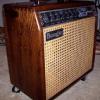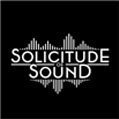Leaderboard
Popular Content
Showing content with the highest reputation since 12/16/2025 in Posts
-
It's a small fix I know but I didn't realize how much it was interrupting my workflow until working on a setlist today and finding it fixed! Thanks Line 6! It used to be that if you were in a setlist, and did a tweak and saved a preset, that it took you out of the setlist and to wherever that preset was saved in the User Presets. Now I can make a tweak, save it, and still be right where I was in my setlist! The tiny "quality of life" stuff like this makes a HUGE difference!2 points
-
Yes. That’s what I did: backup factory reset restore backup delete songs reimport kind of a pain but it’s still working for me!2 points
-
That's a known bug. Will be fixed in a future firmware release. You should open a support ticket to report it anyway.2 points
-
Great discussion. Being able to recall songs via midi (with an associated Preset) will be critical for me (and I suspect others). I may delay purchasing the Stadium until I know this feature has been added. In my small acoustic duo, I use OnSong on an iPad to send PC changes to my devices (BeatBuddy, HX Stomp, and Rc500 looper (backing tracks)) for each/every song. I then use a Morningstar MC8 to control these devices while performing the song. My intent is/was for the Stadium to replace the HX Stomp, RC500, and Morningstar (smaller footprint and less complexity). I go into every gig with a pre-built setlist (in OnSong), but invariably every show is different and we make changes on-the-fly depending on the vibe in the room, audience requests, etc. In those situations, all I need to do is select the song in OnSong, and it loads the beats and/or backing tracks and presets across all my devices - no menu diving, no tap dancing. I get that I could build Setlists (presets) or Playlists (songs) in Stadium, but those don't seem to easily allow for flexibility when ad-hoc set list changes are taking place. The internal Set Lists/Play Lists probably will work fine for larger shows with pre-defined lists that won't likely change. For smaller acts, we're going to need flexibility to call up songs (with associated presets) in a much more flexible manner. Showcase has such promise to help smaller acts add new elements to their shows and I hope Line6 can incorporate features that meet the needs of both large and small acts/performers.2 points
-
This has bee posted before. In summary: 1. when building presets, make sure your overall volume for a blank preset is around the same as the actual preset you are creating to avoid clipping. 2. set up XLR volume to be Mic level and disable the volume knob, so it's fixed. This will go to the FOH and will never change the level, because you don't want to confuse the sound guy by having different volume levels. 3. use the volume knob to only control 1/4" out which is your monitor mix, or in my case which is going to a power amp (Mooer Baby Bomb) into a 12" speaker cab.2 points
-
I think one of the most frequent “write your requests down on a $10 bill” situations could be the solo singer/guitarist playing to relatively small crowds, where the atmosphere can be a bit more intimate and an audience relationship can be established. MIDI Song selection, driven by an app on an iPad or whatever, would be very helpful. For that situation, with or without MIDI Song triggers, I would really like to see a re-introduction of a feature I loved in the old POD X3 Live device: Lock Tone 2. On Stadium it would be called Lock Path B. The idea is that you could maintain your vocal tone with the Mic input on Path B while switching presets for your different guitar tones on Path A. I’m going to submit this as a feature request (again). I did submit this request for OG Helix but….. Come to think of it, OG Helix has a Preset Spillover feature that is essentially a “Block Path B I’m using if for spillover” implementation. Might be feasible to tweak it for “Lock Path B I’m using it for vocals”.2 points
-
That’s available now in the Command Center. Here’s a clip from the manual…. The Song command category is supported by all source controller types other than expression pedals or X-Axis/Y-Axis controllers. This category includes Song View commands to control song transport functions, navigate between existing songs, or select markers within the current song. This can be a convenient way to load and play songs directly from your preset, without having to change to the dedicated Song View screen.2 points
-
Then I hope this is something that gets addressed in a future update. As a performer, I cannot be bending down and scrolling through Songs to load them...or clicking the arrow buttons 20 times to get to the 21st song in my list. Being able to recall both Presets and Songs via midi is a must. Or, maybe an option would be to use and Instant Command to load the Song when you recall a Preset? I did see that you create Set list of Songs. Are Song and Present Setlist different? Or, can a Setlist contain both Songs and Presets?2 points
-
Can’t do that yet. I say ‘yet’ because I know it’s been requested and one implementation method is just a matter of providing a Save to Clip option in the Looper. No idea when, though.2 points
-
Having updated to 1.2 I am coming across myriads of unwanted snapshot bypass and snapshot control. Most of the presets were imported when I was on 1.1, and the amps now also have snapshot control assigned in addition to the Expression control that was there originally. This was apparently a bug in 1.1 which has been fixed in 1.2. What is still happening is inconsistent copying/pasting of blocks with control assignments. When copying and pasting in the editor, the assignments disappear. This also often happens when using the touchscreen on the Stadium. However I have found that saving the original block as a favourite (using the touchscreen and not the editor), and then creating a new block from the favourite, does usually work and preserves the control assignments.2 points
-
Hey just wanted to follow up! Unit is all repaired. Once I figured out the process for setting up a repair everything was a breeze. I was able to find a local repair shop, they handled all the paperwork with Line6. The encoder knob was replaced and we are good to go. All under warranty. This experience has added to my respect for what Line6 is doing.2 points
-
I'm wondering if the Stadium will have any or updated vocal effect integration similar to Headrush. I have been waiting for Line 6 to do this with my current Helix Floor but I guess it's never been a priority. I'd like to have a single unit to handle vocals and guitar that uses all new tech.2 points
-
Reset your helix to factory defaults (after update). of course, back up first, and restore after. A bug is a bug, but this might resolve it for you. You may have to redo from scratch what you had issues with. For instance, to get around the showcase audio issue, I had to delete my tracks and reimport them.1 point
-
1 point
-
So even though this is an issue that they will fix, there might be a workaround. The support guy told me that doing a full reset and deleting and reloading the tracks. could help (he tried it himself). I did. And so far it has survived multiple off and on trip. We’ll see how long it lasts, but it’s a huge improvement.1 point
-
The issue was confirmed and reproduced by line 6 support. fingers crossed!1 point
-
1 point
-
Try holding down FS6+FS12 while starting up. It’s an alternate way to boot in Maintenance mode.1 point
-
Nevermind, I figured it our. After selecting a set list via the touchscreen, you also need to actually load a preset from that setlist. Once you do that all the scribble strips update to reflect the setlist. I thought I just needed to select the setlist name and the scribble strips would update.1 point
-
I presume everyone who supports the idea in this thread has submitted their feature request officially? https://line6.com/company/contact/productfeedback/1 point
-
I have an EV30 working on my Stadium, and that is the way I did it. Of course, you will have the big dead zone at the heel end that all Boss expression pedals seem to have. My workaround for that is to fix a pad to the base under the heel end, so that it stops the pedal travel where the dead zone starts.1 point
-
Yes. Helix was essentially a guitar pedal. "Guitar pedal" is only part of what Stadium is or can be. I suspect there are many more musicians who take requests, or who select songs in real time rather than follow a strict setlist than Line6 realizes right now. I think as more people start to use Showcase this will become evident. After all, the type of player who takes requests - singer/songwriters, duos, nursing home performers - form a natural market for a feature such as Showcase. Stadium is much more than a guitar pedal, even though most of the marketing focus has been in that direction.1 point
-
1 point
-
Don’t know what you mean by this. If your offer involves a fee-for-service transaction be aware that this would violate the Terms of Use in this forum.1 point
-
I just noticed that myself. Made me realize just how often I was making minor adjustments. Much appreciated!1 point
-
Hi. I think that @rondesjardinsis on to something. It would be very useful to call a Song via midi I think. One could have separate hardware and software like a tablet for organizing playlists with apps made for that effect and that would queue and play the Songs in the Helix by sending Midi instructions to the Helix.1 point
-
Hey, brother; hope you had a great holiday! It's been fixed. Yes, the workaround was to save between every snap, but that shouldn't be necessary, and it's not now with 1.2. I did end up submitting an official bug report through the support function, and it's one of the top bug fixes in the release notes. So this should no longer be a problem. I know your reply is a couple weeks old, but I'm just writing this to close the loop for posterity :)1 point
-
Setlists (ordered list of Presets) and Playlists (ordered list of Songs) are different and maintained separately by the user. In Global Settings -> Songs you have options for controlling automated progression through a Playlist.1 point
-
Just submitted a ticket for the same problem but I did notice that during it happening when I checked the matrix screen all my signal was frozen and no sound coming through. I just turned it off and on to fix it though. Hasn’t happened to me at all until these last few days and it happened before the update so I don’t think it’s that. I’m probably just gonna do a factory reset and see if that fixes it. Happened during a live gig and fortunately I thought to turn it off and back on which got me going again quick.1 point
-
Hello! That’s a great catch—you’ve described exactly what makes “quality of life” updates so impactful. Before, saving a preset would kick you out of your setlist workflow and force you to navigate back, which breaks concentration. Now, staying in the setlist after a tweak means you can keep building and refining without interruption. It’s the kind of subtle change that doesn’t look huge on paper but feels transformative in practice—especially when you’re deep in setlist prep. Line 6 clearly listened to user feedback here. Do you want me to help you turn this into a short, polished post (like for a forum or social media shout‑out) that highlights the fix and your appreciation?1 point
-
Done. Thanks for pointing this out. I’ll check into my settings to see if I need to adjust something to get alerted about new users posting in existing threads rather than creating a new one.1 point
-
OK... I'm back with an update. There nothing wrong with the Pitch Wham. It was user error! I just did not isolate my guitar enough to stop the interaction of my speaker/monitors to cause me to mistake the guitar output from the Stadium. Using Headphones and a little more volume (speakers) solved the mystery. Under normal circumstances, I would be playing a lot louder that when in my studio . . . Boy Who Cried Wolf1 point
-
Ooh good catch! I hadn't even thought about trying that with mine!1 point
-
First time posters need moderator approval. I guess none of them (including me) were alerted to your earlier posts because they were in an existing topic. Now that you’ve started a new topic I was alerted to it. Apologies.1 point
-
It may not be perfect and it might be too bulky for a live application but it will work in the meantime. At least until they released the d10 expander: I ran my Variax guitar (via VDI cable) into my original helix and then I split the magnetic pickup and the piezo into two paths. I sent the magnetic pickup out of send 1 and the piezo pickup out of send 2. I then ran two ts cables from the sends into the two instrument inputs on the Stadium XL. I made a patch on the Stadium XL with two separate inputs: one with instrument input 1 and the other instrument input 2. After that you can do whatever. You got to still have to use the original Helix to control the Variax, unless you setup a midi cable and program it. Hope this helps. Thanks!1 point
-
1 point
-
The manual only states it must be formatted using the Helix Stadium process using its maintenance screen. You may want to call support for an exact answer. jpd1 point
-
I connected the send 1 from my Stadium to the input for a stage monitor I have on hand. I set the FX loop 1 output to instrument because line level was too loud. Then I set the output for the tuner to send 1. When I used the tuner there is no output to FOH and the monitor gave me my ""on stage" audio. Adjusting the level output on the monitor, I was able to have a very controlled output volume to listen to my tuning as well as if I wanted to "test" a part without going through the board. If you have something like a Behringer EUROLIVE B105D (or smaller) and a On-Stage SSAS7000B it could be a solution for about $150.00 without having to bend over. Just a thought. jpd1 point
-
Why is there no option to have the preset BPM persistently displayed above the tap tempo switch like there was in Helix floor? I have looked everything in global settings as well as the same spot in the OG Helix Displays settings. Would love for this to be included in the next update, please!1 point
-
I haven’t tested a higher capacity card but I don’t foresee any issues. Inserting and formatting a new card should not disturb anything already on the device - presets, IRs, etc. However I strongly recommend that, as a precaution, you perform a Backup using your current card before swapping. With that you can always recover your pre-card-swap installation. In fact I think using multiple SD cards is a good strategy for managing device content for multiple purposes, e.g. different bands and Setlists, or exceeding the 512 preset limitation. With the pending release of Showcase, and the new preset management scheme - namely that there is only one copy of each preset onboard, with setlists containing only aliases and Songs able to invoke presets and Snasphots - all the Song, Setlist, and Preset data on the device and the SD card at any time comprise a tightly integrated and potentially large dataset. Managing multiple cards with different datasets, using the Backup/Restore feature, will become common practice in the future I believe.1 point
-
Thanks for reposting that here. You are helpful as I remember (been a while since I’ve been on). Good reminder of the D10 features in context. Can’t wait to see what all Line 6 offers for Nexus. It is cool what they’ve done with just the D10.1 point
-
Here’s the product description. I guess you can read some capabilities into it. The Expand D10 digital I/O expansion unit greatly increases the flexibility of Helix Stadium processors. Connect Variax® modeling guitars using VDI and Powercab® 112+/212+ active guitar speaker systems using L6 LINK™. It also expands the ways in which Helix Stadium processors may be used with audio interfaces, digital mixers, multi-connector breakout boxes, and other devices via 8-channel optical out. Features • Variax Digital Interface (VDI), L6 LINK, AES/EBU, and 8-channel optical connectivity • Connect Variax modeling guitars via VDI • Connect Powercab 112+/212+ active guitar speaker systems via L6 LINK • Send two channels of AES/EBU digital audio at 44.1kHz or 48kHz • Send up to 8 channels of digital audio over TOSLINK optical • Connects to Helix Stadium processors with a Cat6 cable via Nexus1 point
-
I'm also experiencing spontaneous sound dropping out. Sometimes the Helix Stadium seems to be sort of resetting. Not a full power cycle though.1 point
-
Here are a few presets from my Modern Metal pack to try. This preset is based off of the Driftwood Purple Nightmare. Must use included custom IR FULL PACK AVAILABLE HERE https://strangeanglesmusic.com/shop/helix HELIX NIGHTMARE DEMO V3.zip1 point
-
1 point
-
This should be a priority, and besides maybe the separating of vocals from guitar, there’s not much that needs added. Auto tune, harmonizer, doubler or chior, and a de-esser, everything else could be pulled from the guitar effects, but it doesn’t seem to be getting mentioned much.1 point
-
Plus one for this!! I'm considering a Headrush for this reason, but if Line6 announce vocal effects (autotune and harmoniser), I'll wait1 point
-
Unfortunately, it looks like support for the PODxt live has now fully stopped. If I understand correctly, even running Line 6 Monkey on an older computer will no longer allow you to perform factory resets, firmware upgrades, patch backup, etc., due to a server issue. Essentially, any PODxt live unit is now a standalone unit fixed in its current state (firmware version) and settings/patches can only be edited on the unit itself. There is a cool Pod-UI app over on GitHub, which allows editing of parameters but nothing else. If anyone has any information related to how to possibly perform a firmware upgrade or factory reset of a PODxt live unit in 2025, please let me know. Thanks!1 point
-
uninstall helix native. delete folders found at appData/Roaming/Line 6 restart reinstall1 point
-
Spider V is a modeling amp and has full range speakers. Modelers are made to tweak. You have to when you have cabinets, amp models, eq's, drives with EQ's. Prior versions of Spider's were not based on full range amplification. Models tweaked for a guitar speaker. That is what Boss did with Katana. That is what they did with BlackStar ID amps. I followed the video ideas on using parametric eq with Spider V. It helped resolve many of my sound tweaks. It's on Youtube. I posted the link here. Once you learn to use this in presets, the amp will really come alive. Katana is too one trick pony for me. I bought one. I Didn't like it. I won't argue about it. I needed an amp with all the versatility of the Spider V, or Amplifi. Spider V had all the options I need in controllers, and the built in wireless was the deal maker. My Spider V also has great sound from the XLR outputs to our pa board. That output is stereo and sounds incredibly full. We haven't really used my amp loud because we like the XLR out sound. It is much easier to work with our band, and we don't have loud amps mic'd we have to contend with. This way, it's more like my modeler, but it has the amplification that can get loud if I need it to. Spider V has a lot to offer to any player that needs the versatility and routing that I do. Here are links for eq use1 point
This leaderboard is set to Indiana - Indianapolis/GMT-05:00







